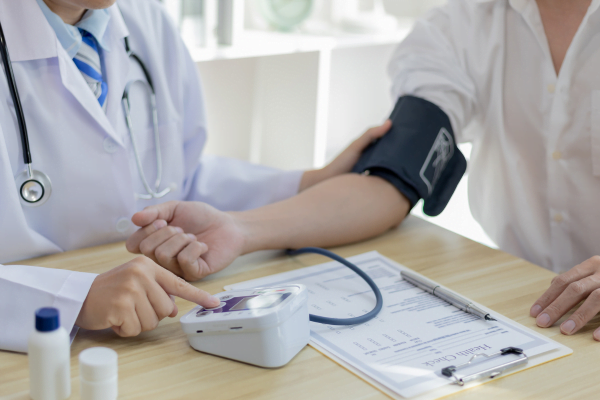High blood pressure, or hypertension, is a common condition affecting millions globally. Often undiagnosed until severe health issues arise, it’s crucial to understand high blood pressure, its risks, and management strategies to handle this silent threat effectively.
Defining High Blood Pressure
High blood pressure occurs when the force of blood against artery walls is excessively high over an extended period. This condition can lead to strained heart function, damaged blood vessels, and significant health threats like heart disease and stroke.
Blood Pressure Basics
Blood pressure is quantified in millimeters of mercury (mm Hg) and consists of two values: systolic (top number) and diastolic (bottom number). Systolic pressure measures the force when the heart beats, while diastolic pressure measures the force when the heart rests between beats.
Identifying Stroke-Level Blood Pressure
Stroke level blood pressure, or hypertensive crisis, occurs when readings reach extremely high levels. A systolic reading of 180 mm Hg or higher and/or a diastolic reading of 120 mm Hg or higher necessitates immediate medical intervention.
Risks of High Diastolic Blood Pressure
Both systolic and diastolic pressures are critical, but high diastolic blood pressure can signal arterial stiffness and heighten the risk of heart disease, stroke, and other issues. Consistent monitoring of both values is essential for comprehensive blood pressure management.
Heart Rate vs. Blood Pressure
Though interrelated, heart rate and blood pressure serve different roles. Blood pressure measures the force of blood against artery walls, while heart rate indicates heartbeats per minute. Both are key to cardiovascular health and merit regular attention for optimal well-being.
High Blood Pressure and Low Heart Rate
Some individuals may experience high blood pressure accompanied by a low heart rate. This combination can be a sign of underlying health conditions and requires thorough medical evaluation to prescribe the right treatment.
High Blood Pressure in Young Adults
Although commonly linked with older age, hypertension also affects young adults due to poor diet, lack of exercise, stress, and genetic factors. Early detection and lifestyle changes are crucial to avoiding complications.
The Four Stages of Hypertension
High blood pressure is classified into four stages, ranging from elevated blood pressure to hypertensive crisis, each with varying risk levels and recommended interventions.
Stage 1 Hypertension
Stage 1 hypertension is characterized by a blood pressure range of 130-139 mm Hg systolic or 80-89 mm Hg diastolic. Though moderate, it signals heightened cardiovascular risk. Recommended management includes lifestyle changes like healthier diet, enhanced physical activity, and stress management. Medication might not be necessary at this stage, but vigilant monitoring is vital to prevent escalation.
Stage 2 Hypertension
Stage 2 hypertension involves blood pressure readings of 140 mm Hg or higher systolic, or 90 mm Hg or higher diastolic. Risk of heart disease and stroke is significantly increased. Lifestyle modifications may need to be supplemented with medications for better control. Adhering to prescribed treatment and regular doctor visits for ongoing assessment is essential.
Hypertensive Crisis
A hypertensive crisis describes very high blood pressure, categorized as either urgent or emergency. Urgent crisis involves severe hypertension without immediate organ damage, with readings of 180 mm Hg systolic or higher and/or 110 mm Hg diastolic or higher. Emergency crisis includes severe hypertension with acute organ damage evidence, such as chest pain or neurological symptoms.
White Coat and Masked Hypertension
White coat hypertension is when blood pressure rises in clinical settings due to stress but remains normal otherwise. Masked hypertension shows normal blood pressure in clinical settings but elevated readings elsewhere. Both conditions need careful monitoring for proper management.
Hypertension in Your Mid-Twenties
An increasing number of people as young as 25 are being diagnosed with hypertension. Factors like lifestyle choices, genetics, and environment contribute to this trend, highlighting the need for early detection and preventive approaches.
Key Takeaways
Grasping the seriousness of high blood pressure is vital for protecting your cardiovascular health. Staying informed, regular monitoring, and healthy lifestyle choices are key to effectively managing hypertension and reducing associated risks. Empower yourself with knowledge to take charge of your health.
Frequently Asked Questions (FAQs)
Why is hypertension referred to as the “silent killer”?
Hypertension is called the “silent killer” because it often shows no symptoms until significant damage occurs. Regular blood pressure checks are crucial because untreated high blood pressure can lead to severe health issues over time.
When is blood pressure at its peak during the day?
Blood pressure typically peaks during daytime hours, especially in the morning. This pattern, known as morning hypertension, underscores the importance of checking blood pressure at various times to ensure accurate assessment and tailored treatment.
What constitutes stroke-level blood pressure?
Stroke-level blood pressure is generally marked as a hypertensive crisis, featuring systolic readings of 180 mm Hg or more and/or diastolic readings of 120 mm Hg or more. Such levels require immediate medical attention to prevent severe complications like stroke.
